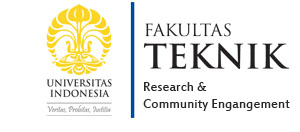| Authors | Adeline Bourgeault, Catherine Gourlay-Francé, Cindy Priadi, Sophie Ayrault, Marie-Hélène Tusseau-Vui |
|---|---|
| Publication Name | Environmental Pollution |
| Abstract | This study investigates the ability of the biodynamic model to predict the trophic bioaccumulation of cadmium (Cd), chromium (Cr), copper (Cu), nickel (Ni) and zinc (Zn) in a freshwater bivalve. Zebra mussels were transplanted to three sites along the Seine River (France) and collected monthly for 11 months. Measurements of the metal body burdens in mussels were compared with the predictions from the biodynamic model. The exchangeable fraction of metal particles did not account for the bioavailability of particulate metals, since it did not capture the differences between sites. The assimilation efficiency (AE) parameter is necessary to take into account biotic factors influencing particulate metal bioavailability. The biodynamic model, applied with AEs from the literature, overestimated the measured concentrations in zebra mussels, the extent of overestimation being site-specific. Therefore, an original methodology was proposed for in situ AE measurements for each site and metal. |
| Publisher | Elsevier |
| ISSN | 0269-7491 |
| Page | 3381–3389 |
| Volume | 159 |
| Impact Factor (JCR) | 4.839 |
| SJR | 2.045 |
| Ranking Quartile | Q1 |
| Website | http://dx.doi.org/10.1016/j.envpol.2011.08.034 |
Bioavailability of particulate metal to zebra mussels: Biodynamic modelling shows that assimilation efficiencies are site-specific
LATEST POST
CALL FOR PROPOSAL: Penerimaan Hibah Seed Funding Publikasi FTUI 2025
CALL FOR PROPOSAL: Penerimaan Hibah Osaka Gas Tahun 2025
6 Dosen Fakultas Teknik Universitas Indonesia Catatkan 8 Paten
Mahasiswa FTUI Kaji Potensi Hidrogen Alami di Sulawesi, Didorong Jadi Rujukan Kebijakan Nasional
Mahasiswa FTUI teliti potensi hidrogen geologis pertama di Indonesia
POPULAR NEWS
LATEST VIDEOS
LOGIN






